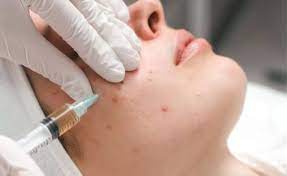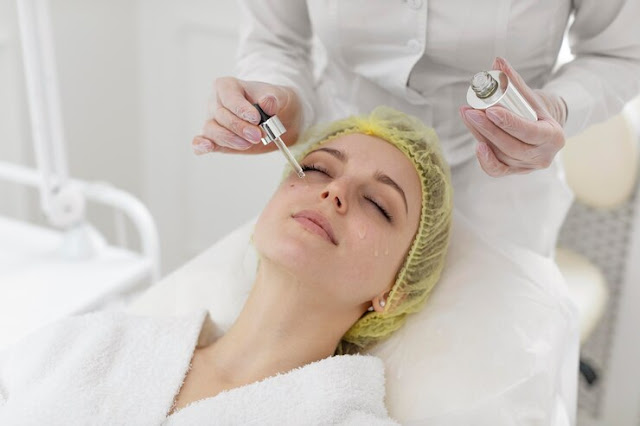Decoding the Benefits: PRP Treatment For Skin Brightening
Are you tired of uneven skin tone or hyperpigmentation? PRP skin treatment might be the answer if you’re seeking a natural and effective solution for skin whitening. In this blog, we’ll discuss the benefits of Platelet-Rich Plasma (PRP) Treatment for skin whitening, exploring how this cutting-edge procedure can provide impressive results while minimizing risks and side effects. Keep reading to discover if PRP treatment is the skin whitening solution you’ve been searching for!
Understanding PRP Treatment for Skin Whitening
Platelet-rich plasma (PRP) is a concentrated solution of platelets derived from your blood, containing numerous growth factors and cytokines that promote healing and rejuvenation. PRP treatment for skin whitening involves injecting this plasma into your skin to stimulate natural regeneration, encouraging the production of collagen, elastin, and new skin cells. The result? A brighter, more even complexion with reduced hyperpigmentation.
Key Benefits of PRP Treatment for Skin Whitening
Natural and Holistic Approach to Skin Whitening
One of the main reasons people choose PRP treatment for skin whitening is its natural and holistic approach. Unlike chemical-based treatments, PRP uses your body’s platelet-rich plasma, eliminating the need for synthetic substances or potentially harmful chemicals. This makes PRP treatment a safer, more organic alternative for those seeking a healthier way to achieve a brighter, more even complexion.
Minimal Side Effects and Low Risk of Complications
As PRP is derived from your blood, the risk of allergic reactions or other complications is significantly lower than other skin whitening treatments. While minor side effects, like redness, swelling, or bruising, may occur after the procedure, these subside within a few days. This minimal risk profile makes PRP treatment an attractive option for those concerned about the potential downsides of other skin whitening methods.
Stimulates Collagen Production for Improved Skin Elasticity
The growth factors present in PRP contribute to skin whitening and stimulate collagen production. Collagen is a vital protein that helps maintain the skin’s structure and elasticity, giving it a firm, youthful appearance. Collagen production naturally decreases as we age, leading to sagging and wrinkles. PRP treatment helps counteract this by promoting new collagen formation, resulting in firmer, smoother skin with a youthful glow.
Evens out Skin Tone and Reduces Hyperpigmentation
Hyperpigmentation, including age spots, sun damage, and melasma, can leave your skin uneven and dull. PRP treatment effectively targets these issues by encouraging the growth of new, healthy skin cells and promoting the shedding of damaged cells. Over time, this leads to a more balanced, radiant complexion with reduced pigmentation and a more even skin tone.
Long-lasting and Effective Results
While individual results may vary, many patients report visible skin tone and texture improvements after one PRP treatment. Optimal results are typically achieved after a series of sessions, with effects lasting several months or even years, depending on factors such as lifestyle and skincare habits. The longevity of PRP treatment outcomes makes it a worthwhile investment for those seeking a long-term solution to skin whitening.
Suitable for All Skin Types
PRP treatment’s compatibility with various skin types and ethnicities makes it a versatile option for diverse individuals. While some skin whitening treatments may be too harsh or ineffective for specific skin types, PRP offers a more universally effective solution, ensuring everyone can enjoy the benefits of a brighter, more even complexion.
Minimal Downtime and Recovery
One of the most appealing aspects of PRP treatment for skin whitening is the minimal downtime involved. Most patients can resume their normal activities immediately following the procedure, with only mild redness or swelling as temporary side effects. This quick recovery period means you can return to your daily life without significant interruption, making PRP treatment a convenient choice for those with busy schedules or who simply don’t want to deal with lengthy recovery times.
On average, a single PRP treatment session can cost anywhere from $500 to $2,000 or more in the United States. The cost of PRP treatment for skin whitening can vary depending on several factors, such as the provider’s experience, geographical location, and the number of sessions required.
PRP Treatment vs. Other Skin Whitening Methods
Let’s compare PRP treatment to traditional skin whitening methods, highlighting the pros and cons of each and demonstrating why PRP stands out as a superior option for many individuals.
Chemical Peels
Chemical peels involve the application of a chemical solution to the skin, which causes the outer layers to exfoliate and eventually peel off. This reveals a new layer of skin that is typically smoother and brighter. While chemical peels can effectively reduce hyperpigmentation and improve skin texture, they also have several drawbacks. These include potential irritation, redness, and peeling, which can be uncomfortable and require a significant recovery.
Microdermabrasion
Microdermabrasion is a non-invasive procedure that uses a mechanical device to exfoliate the skin, removing dead skin cells and revealing a brighter, more even complexion. Although microdermabrasion can be effective for some individuals, it may not suit those with sensitive skin, as the procedure can cause redness and irritation.
Laser Treatments
Laser skin whitening treatments use focused light energy to target and break down melanin, the pigment responsible for skin color. These treatments can reduce hyperpigmentation and improve skin tone by destroying melanin deposits. However, Laser Treatments Have Risks and potential side effects, such as burns, scarring, or uneven pigmentation. They also typically require multiple sessions and may not be suitable for all skin types or colors.
Finding a Qualified PRP Treatment Provider
When considering PRP Treatment For Skin Whitening, finding a qualified practitioner with experience in this procedure is crucial. A skilled provider can help you achieve the best possible results while minimizing risks or complications. Schedule a consultation to discuss your goals, concerns, and expectations.




Comments
Post a Comment